Done incorrectly, visiting the Louvre can be a serious drag. You will have to endure insanely long lines and hassles only to see a few famous pieces of art you’ve seen a thousand pictures of, just to check a box on your itinerary. Your day will be long, frustrating, and no fun.
Done correctly, however, your visit to the Louvre will be amazing. The Louvre is a wonder. Even if there was no art in the building whatsoever, the building itself is one of the most incredible you will ever see. And the artwork is legendary, one of the best collections in the world gathered over hundreds of years. There is more of it than you could ever see in a day.
If you avoid the lines and go in with a plan to see what you want to see, your visit will be great. If you walk in with an appreciation of what you are seeing, and the history of it all, your visit will be that much better. This article aims to help you do just that.
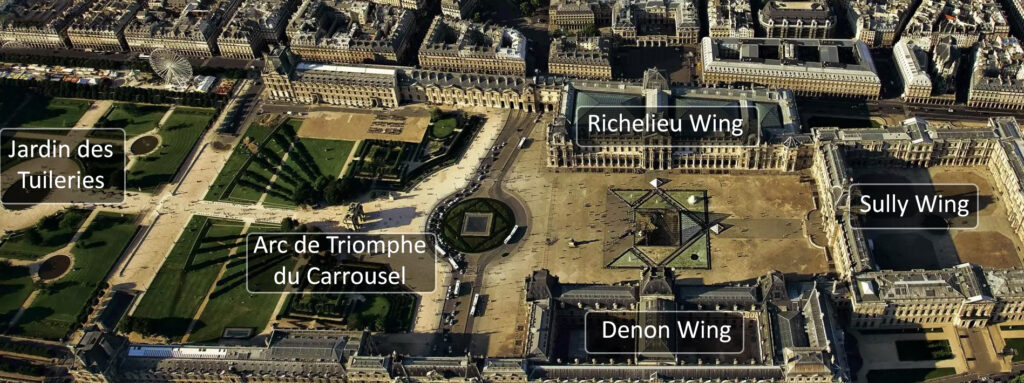
What is the Louvre?
The Louvre is the most visited art museum in the world, drawing up to 10 million visitors a year (pre-Covid). It has a collection of roughly 400,000 artifacts and pieces of art, including some of the most famous pieces in the world, such as the Mona Lisa, Winged Victory, and Venus de Milo. At any given time, 38,000 of these pieces are on display. That means if you spent 30 seconds looking at each of the 38,000 pieces on display, it would take you 316 hours to see everything (that’s about 40 8-hour days).
The building itself is a former palace located in the center of Paris. It started as a fortress in the 12th century, then became a palace, before becoming a museum during the French Revolution. It has over 650,000 feet of space. To put it in context, that’s about 15 acres.
The Louvre is on everyone’s to-do list in Paris. Therefore, the lines for admission can be crazy long. There is almost no sense in talking about anything else before we conquer this hurdle. So first, let’s talk about getting in without standing in a huge line.
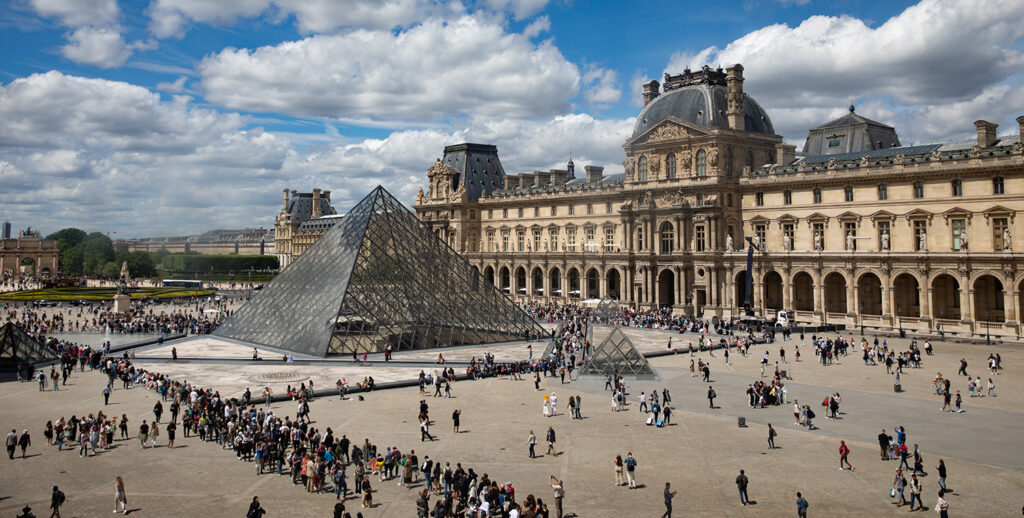
Avoiding the Lines
There are a few different ways you can go about avoiding standing in a long line to get into the Louvre, but for most people there is just one simple step you need to take: get your tickets in advance. It is just that simple. You can get them on the Louvre’s website. Tickets cost 17€. Kids under 18 are free. Doing so allows you to skip the dreaded ticket line.
There is one draw-back to buying your tickets in advance, and that is that you will be locked into a specific date and time for your visit. When you buy the tickets, you will have to pick your date and your time in half-hour increments. You will need to show up to the Louvre at the specified time (get there 15 minutes early). So you cannot just show up whenever you want. You’ll have to plan ahead.
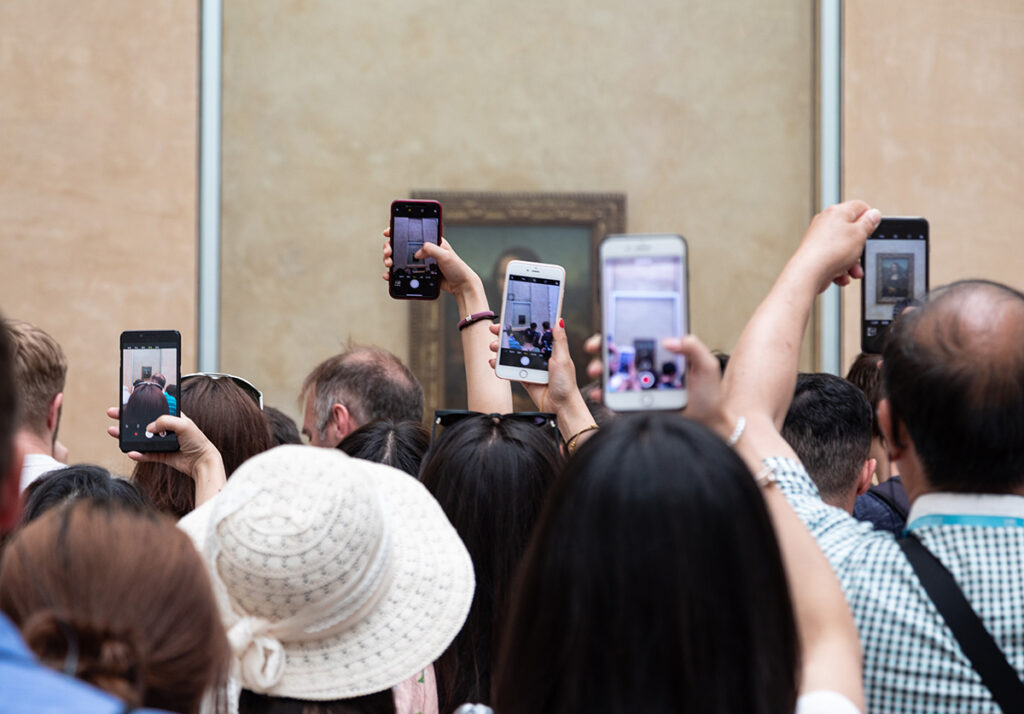
Group Tickets
If you have a group, it can be even easier. The Louvre allows group tickets for groups anywhere from 7 to 25 people. What’s great about this is that there is a separate entrance for groups that makes it even easier to get in. It is in the Passage Richelieu, which is off the Rue de Rivoli, the street that runs along the north side of the Louvre.
There are a few downsides to visiting as a group though. First, you have to get those tickets really early, as in my experience they sell out quickly. Next, your group leader cannot speak to the group inside the museum unless they are licensed, and only French people can be licensed. To be clear, that doesn’t mean they cannot talk at all, it just means they cannot talk loudly to the whole group at once. And finally, there is an additional 70€ group fee on top of the ticket price.
If you have a group larger than 6, you don’t have to buy group tickets. On the Louvre’s website, you are limited to 6 tickets at a time, but there is nothing to stop you from buying however many sets of 6 tickets that you want. So if, say, you have 14 people in your group, just buy a set of 6 tickets, then buy another set a minute later, and then buy another 2 tickets a minute after that. You’ll need the names of all the people in your group, as they are printed on the tickets. You’ll print these out at home (or keep digital copies to show on your phone).

Going Late
Buying your ticket ahead of time will help you avoid lines to get in, but it won’t help you avoid crowds. As you might imagine, once you get into the Louvre, there will be lots and lots of people. You’ll find yourself waiting to see the major pieces.
There is one way you can do that though. That is to go late.
Normally, the Louvre closes at 6:00 pm. However, on Fridays, the Louvre stays open until 9:45 pm. It is much less crowded during these later hours. If you can make your schedule work, this is the best time to visit the Louvre. You won’t have the place to yourself, but the crowds are easily less than half what they are during the day. It makes the experience more enjoyable.
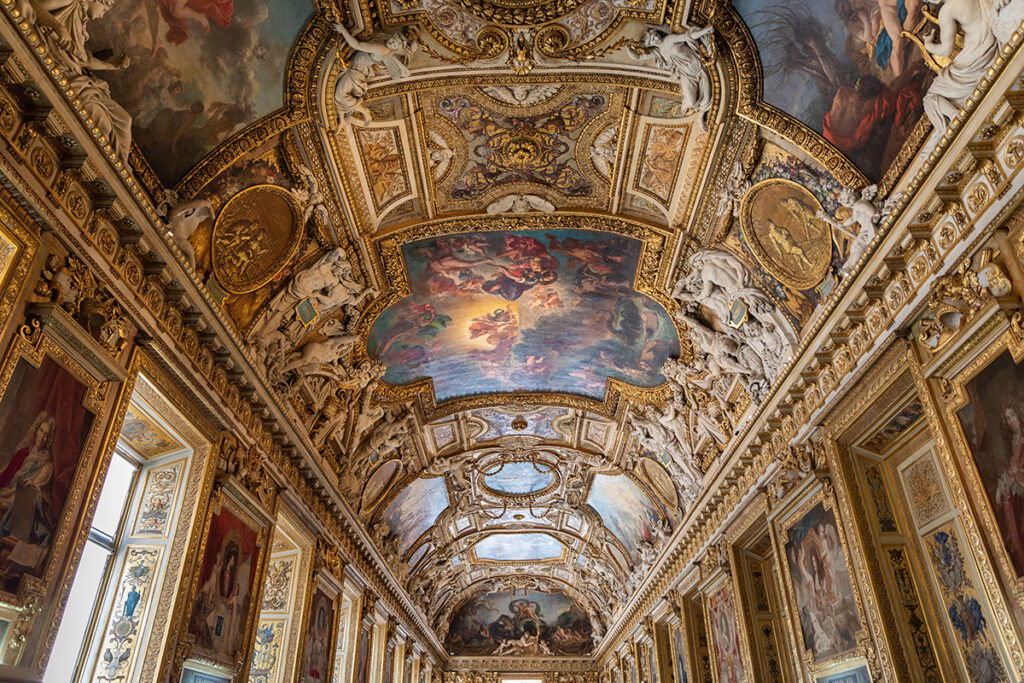
The Louvre Palace
If you are like me, once you get to the Louvre you will be as interested in the building itself as what’s in it. Once you get to the Louvre, there is a great place to learn more about it, which is called the Pavillion de l’Horloge and it is located in the Sully Wing (more about the wings in a minute). On the lowest level (Level -1) you can see how the Louvre went from a fortress to a palace to a museum. It is well worth a visit and I actually recommend starting your visit to the Louvre here.
In the meantime, I want to give you the big picture so you can appreciate what you are seeing. I was originally going to include that in this article, but it got so long that I put it in a separate article. If you are interested, you can check that out here. Then come back here and we’ll get into how the Louvre is laid out and how you might want to approach your visit.
Louvre Layout
When you enter the Louvre, you will be in a central area and you will see three wings or sections of the museum. They are labeled: Sully, Richelieu, and Denon. The first two were important French ministers and the third was the first director of the museum. Each wing has its own entrance, but the wings are interconnected in some places.
The Louvre is organized by type of artifact. The categories are: Egyptian Antiquities, Green and Roman Antiquities, Near Eastern Antiquities, Islamic Art, Sculptures, Decorative Arts, Paintings, Prints and Drawings. All paintings are pre-1848 so Impressionists are in different museums (primarily the Musee d’Orsay).
They have printed maps you can get at the entrance. You should take one of them and try to follow along as you go. The rooms are numbered so you can tell where you are at any time. That’s not to say you won’t find it confusing – you will. Take your time and you will be able to figure it out.

A Plan for Your Visit
Next let’s talk about an approach for your visit. As a threshold matter, don’t try to visit all the rooms. There are 403 of them. You’d actually walk 14 kilometers if you just wandered around but managed to hit all the different rooms.
To avoid being overwhelmed, have a strategy. Tailor that strategy to how much time you have or want to spend in the Louvre. Also, to be clear, wandering around is not a strategy. In any event, here are a few different ways you might approach the Louvre.
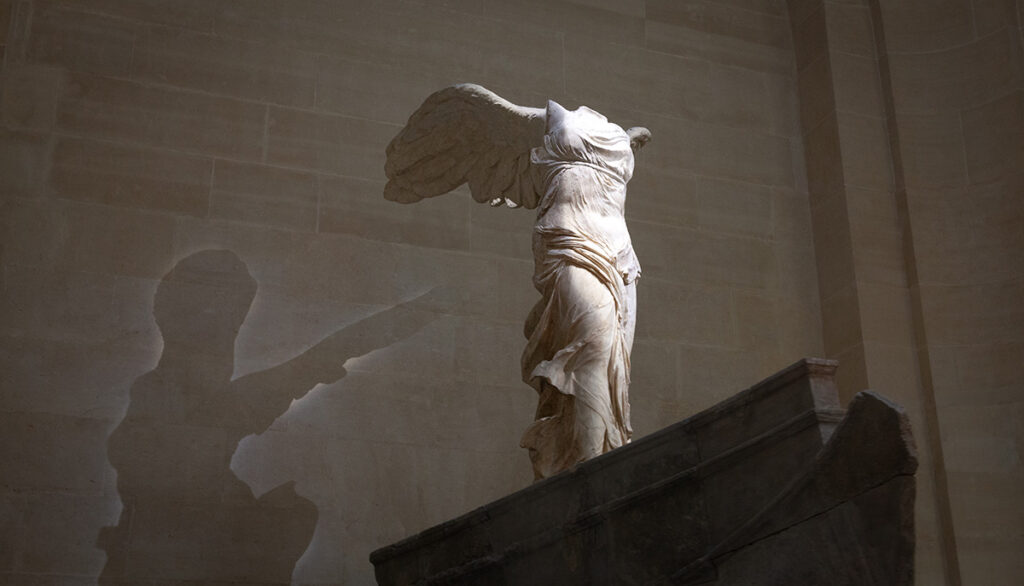
Option 1: The Big Three and Leave
One strategy for visiting the Louvre is to just get in, see the most famous items – that is, the Mona Lisa, Winged Victory, the Venus de Milo, and the Code of Hammurabi – check out the building itself, and go.
I used to consider this something of an “Ugly American” approach to visiting the Louvre, but I really don’t anymore. The fact is that you’re your time in Paris is limited. The average tourist only spends 3-4 days in Paris, so they cannot spend a full day in the Louvre. My tours spend longer than that in Paris (6 days) but we still don’t have the time to devote an entire day to the Louvre. And frankly, I don’t think you’d want to anyway. Since you are limited, you want to see the biggest and best things, and these are certainly the most well-known.
If you choose to follow something like this approach, here is the locations of the most popular items:
- Mona Lisa is in room 711 in the Denon Wing on level 1.
- Winged Victory is in the Denon wing on level 1 on a staircase called the Daru staircase.
- The Venus de Milo is in the Sully Wing on Level 0.
- The Code of Hammurabi is in room 227 in the Richelieu Wing on level 0.
You should be able to find them pretty easily using the maps at the entrance.
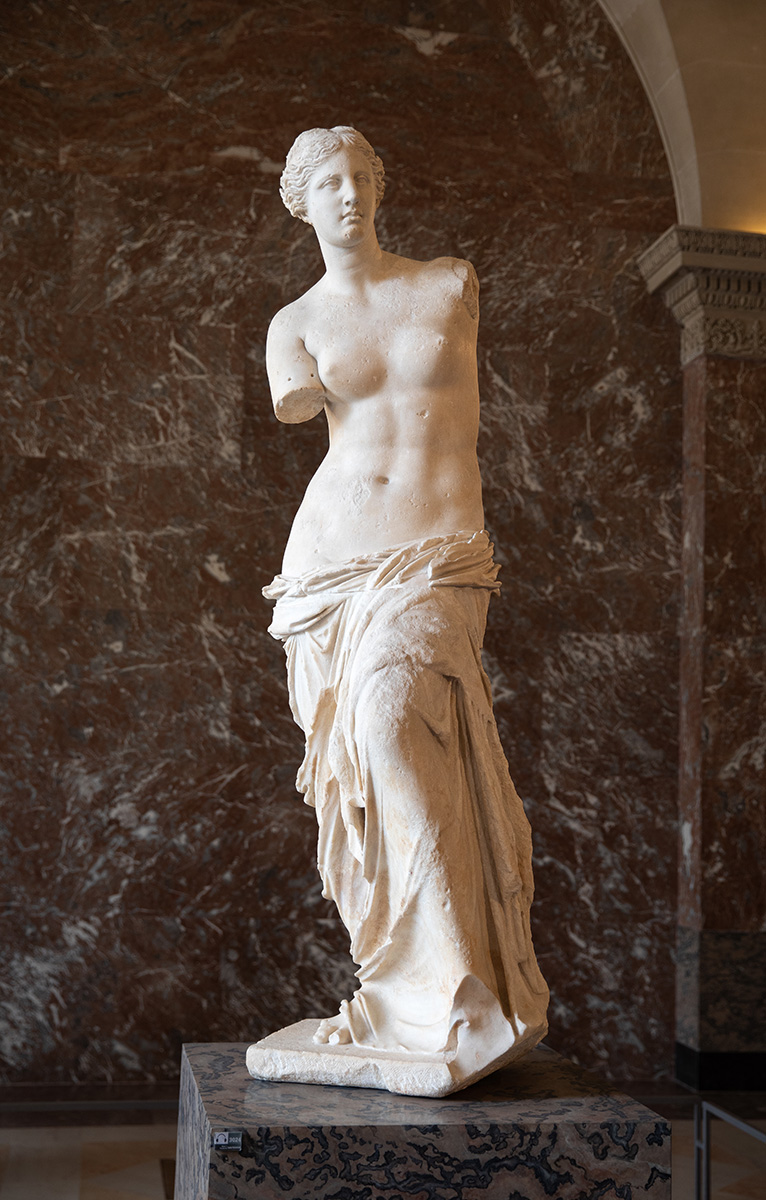
Option 2: Guided Tour
Another strategy is to take a guided tour. There are many guides you can find online before you leave for France. This will cost considerably more (typically about 80 Euros per person), but there are several advantages. Obviously, you will have the expertise of the guide. They will not only be able to explain the significance of many of the pieces, but will also steer you in the right direction. This makes your visit much more streamlined and efficient. In addition to that, you will typically be able to enter the Louvre through the group entrance and save time.
If you go on your own, don’t forget you can also get an audio guide. This can get you additional information about the pieces and keep you moving.
The downside of the guide is that you are seeing the Louvre on someone else’s schedule. They tend to go on longer than you’d like in an effort to make sure you feel like you have gotten your money’s worth. You also feel compelled to show great interest in everything so that the guide doesn’t think you are rude. Sooner or later, I find it all tedious.
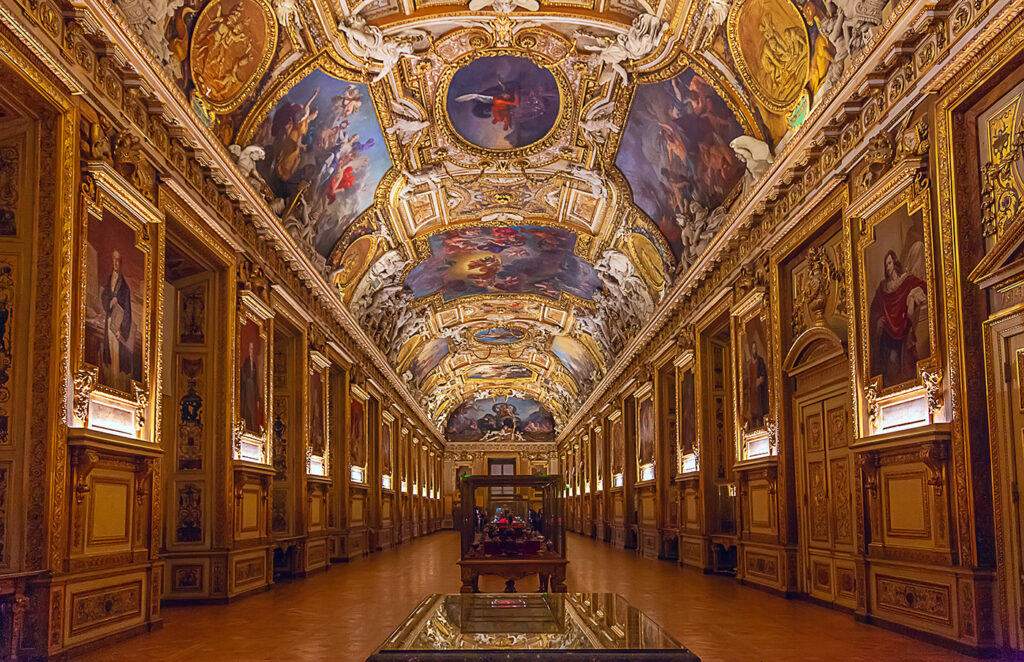
Option 3: Pick One Area
My favorite strategy is to pick one area of a museum and spend all my time there. It makes the museum much more manageable and I find I get more out of it.
This approach works great in the Louvre, which is divided into sections. You can pick one type of art – say, sculptures – and just focus on that. You’ll find you learn a lot about that topic. In addition, hopefully you will be coming back to Paris in the future. You can come back to the Louvre and concentrate on another section at that time.
Of course, you can combine these approaches a bit too. You can hit the Big 4 and then concentrate on one section. And you can get a guide (real or audio) and just have them focus on the one area.

On your first visit to Paris, you almost have to visit the Louvre. It is too big, too important, too central to Paris. That being the case, take efforts at making the experience as enjoyable and informative as possible. If nothing else, be sure to get your tickets in advance. And once you are in the door, don’t try to see everything. Have a plan for what you want to see and focus your efforts. You’ll find the visit one of your favorite parts of your trip to Paris.
The Louvre: Basic Info
Hours:
- 9:00 am – 6:00 pm Mon, Wed, Thu, Sat, Sun
- 9:00 am – 9:45 pm Fri
- Closed Tuesday
Address: Rue de Rivoli, 75001 Paris
Metro: Palais-Royal / Musee du Louvre (lines 1 and 7) or Pyramides (line 14) (400 meters away)
Website: www.louvre.fr
